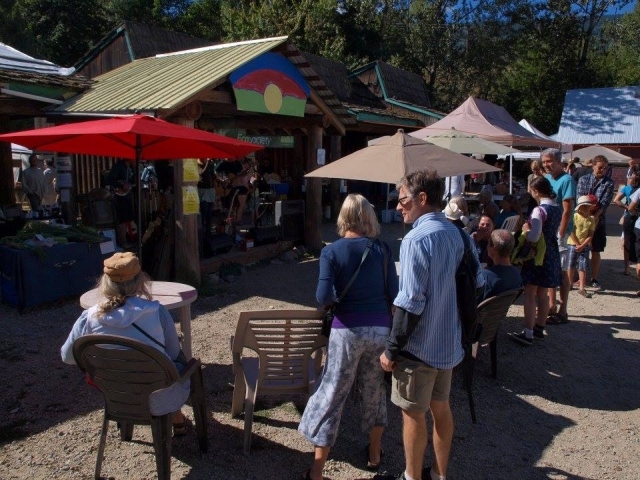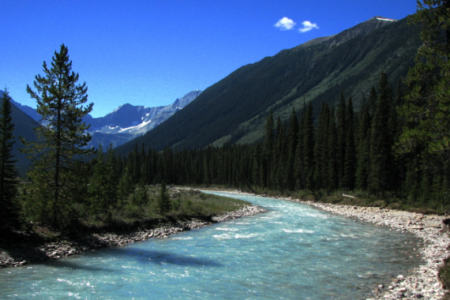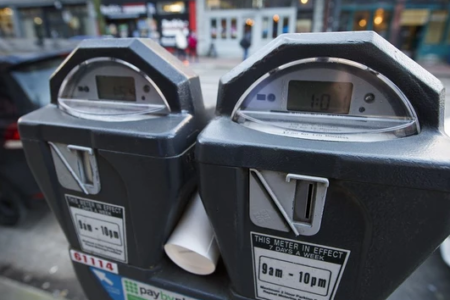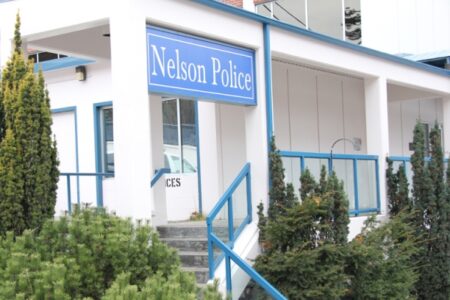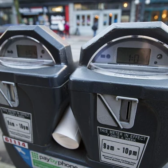Sun prepares to set on current Cottonwood Market facility: Demolition to be complete by end of 2015
The day is coming to an end for the Cottonwood Market structures.
As the host for the community’s Saturday market gathering for over one decade — and innumerable markets for almost 40 years — the Cottonwood buildings are slated for demolition by the end of the year.
On Monday afternoon city council approved the fee proposal and scope of work from Cover Architectural Collaborative Inc. for the amount of $12,600 to redesign a new market facility — to be built in partnership with the Eco-Society and open in 2016 — and the removal of the existing structures in 2015.
The preliminary estimate for the construction of the new market is between $100,000 and $150,000.
The West Kootenay Eco-Society has agreed to take the lead in fundraising for the construction costs. As well, an unnamed community business partner has expressed interest in contributing to the project.
Coun. Michael Dailly had some concern that there were no assurances on a $150,000 budget that a new structure would be in place in spring.
He was curious about what the fundraising and grant writing time line was for the project, and what role — financially speaking — the city would play in the project.
“Should we be also stepping up and saying ‘Yes, the market is valuable to us and our community, should we be putting 50 per cent up?’ or something like that?” he asked.
Mayor Deb Kozak said if council wanted to speed the project along with some financial contributions, that scenario could be explored in the upcoming budget deliberations beginning later this month.
“It’s our facility, and it’s our park, why are we not paying the full share of this?” asked Coun. Bob Adams. “We should not be waiting until someone fundraises to fix it.”
Dailly also wanted some clarity on what would be happening in a city park, as well as the city having some say in the redesign.
The contract with Cover Architectural is with the City of Nelson and not the West Kootenay Eco-Society, said city manager Kevin Cormack.
“Whatever they come up with in the design phase will ultimately come back to council (for input),” he said.
The city has been working with the Eco-Society for some time to address the replacement of the structure, Cormack noted.
Former Cottonwood market manager and member of the West Kootenay Eco-Society, John Alton, noted in a previous council meeting there was a certain amount of cultural connection to the buildings after 10 years of hosting summer markets, and there needed to be a public process and consultation with the community on the market structure’s fate.
Coun. Anna Purcell asked if there was a “mechanism” in place for the public to give Cover Architectural their feedback on the design, and what is important to them in Cottonwood Park.
“My understanding is that the Eco-Society volunteered to host some public conversations around this re-design,” said Cormack.
The city’s hand was also not forced by “criminal activity” in the decision to demolish the structures, said Kozak.
“In conversations it was decided that, at some point, these structures have to come down,” she said. “We decided that this year would be a good year.”
The existing structures that house the Cottonwood Market were constructed some 40 years ago by the boy scouts as camping structures.
“The reality of the current structures is that the roof needs to be replaced, more covered area is needed, and security is a concern for market assets,” read an Eco-Society report to council.
“The walls and foundations seem sound. If the structures are going to be torn down in the next 10 years to facilitate Railtown development, it doesn’t make sense to invest $50-100,000 in repairing them.”
A review of the structures was made by the city engineering department and it agreed with the assessment made by the Eco-Society.
“Once we are made aware of a liability situation, it is not good thing to proceed or to leave structures standing,” said Kozak.
The orientation to the park is also poor as the structures effectively create a barrier to the park. The other big concern with the present market is pedestrian and parking circulation, the current situation is “chaotic” and pedestrian safety is poor. Circulation to the vendors in the market is also not ideal.
Six years ago Nelson architect Thomas Loh presented a commissioned vision to the city on a redesign for the market, and elements of that will be drawn upon for the new market vision.
In order to design and construct a new market by spring 2016 the design work needs to begin in late 2015, early 2016. The design can be completed that does not impact the larger Railtown revitalization planning work.
The new market
The city and the Eco-Society have agreed that the new market will roughly equal the capacity of the existing market, with some additional features.
The following is a description of the proposed functional elements of the new market.
Construction:
- Approximately 2,000 square feet of covered area for vendors and pedestrian circulation;
- Two durable washroom facilities with the potential for use beyond market hours;
- A lockable facility maintenance room and storage area for management use;
- A covered band shell that includes electrical services and a lockable storage area;
- Audience seating incorporated into the landscape that may or may not be covered;
- A play area.
Additional considerations:
- Potential protective fencing along Cottonwood Creek;
- Space for additional formal (paying) market vendors in proximity to the covered market stalls;
- Space for informal (non paying) market vendors in proximity to the covered market stalls;
- Pedestrian and vehicular circulation on and around the site;
- Pedestrian and vehicular connections between the market site and the remainder of Nelson;
- Relationships between the new market and surrounding properties, including Cottonwood Park and other city properties.
Considerations for future expansion:
- Additional covered and uncovered vending spots;
- Future parking needs;
- Storage capacity for vendors.



